Bayes' rule
Foundations of Probability in Python

Alexander A. Ramírez M.
CEO @ Synergy Vision
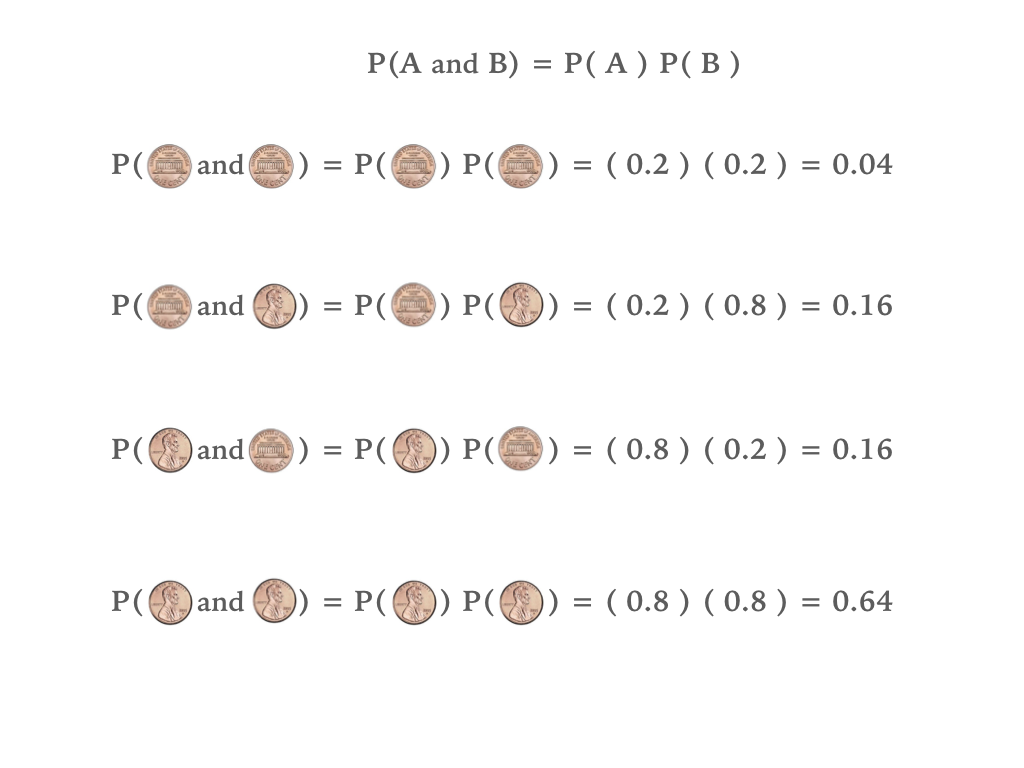
P(A and B) for independent events
$$ $$
$$\color{red}{P(A\ and\ B)=P(A)P(B)}$$
P(A and B) for dependent events
$$ $$
$$P(A\ and\ B)=P(A)P(B)$$ $$P(A\ and\ B)=\color{blue}{P(A)P(B|A)}$$
P(A and B) for dependent events (Cont.)
$$ $$
$$P(A\ and\ B)=P(A)P(B)$$ $$P(A\ and\ B)=P(A)P(B|A)$$ $$P(B\ and\ A)=\color{red}{P(B)P(A|B)}$$
P(A and B) is equal to P(B and A)
$$ $$
$$P(A\ and\ B)=P(A)P(B)$$ $$\color{gray}{P(A\ and\ B)}=\color{blue}{P(A)P(B|A)}$$ $$\color{gray}{P(B\ and\ A)}=\color{red}{P(B)P(A|B)}$$
P(A and B) is equal to P(B and A) (Cont.)
$$ $$
$$P(A\ and\ B)=P(A)P(B)$$ $$\color{gray}{P(A\ and\ B)}=\color{blue}{P(A)P(B|A)}$$ $$\color{gray}{P(B\ and\ A)}=\color{red}{P(B)P(A|B)}$$ $$\color{blue}{P(A)P(B|A)}=\color{gray}{P(A\ and\ B)}=\color{gray}{P(B\ and\ A)}=\color{red}{P(B)P(A|B)}$$
Bayes' relation
$$ $$
$$P(A\ and\ B)=P(A)P(B)$$ $$\color{gray}{P(A\ and\ B)}=\color{blue}{P(A)P(B|A)}$$ $$\color{gray}{P(B\ and\ A)}=\color{red}{P(B)P(A|B)}$$ $$\color{blue}{P(A)P(B|A)}=\color{gray}{P(A\ and\ B)}=\color{gray}{P(B\ and\ A)}=\color{red}{P(B)P(A|B)}$$ $$\color{blue}{P(A)P(B|A)}=\color{red}{P(B)P(A|B)}$$
Bayes' rule
$$ $$
$$\color{blue}{P(A)P(B|A)}=\color{red}{P(B)P(A|B)}$$ $$ $$ $$\Longrightarrow \large{\color{red}{P(A|B)} = \frac{\color{blue}{P(A)P(B|A)}}{\color{red}{P(B)}}}$$
Total probability
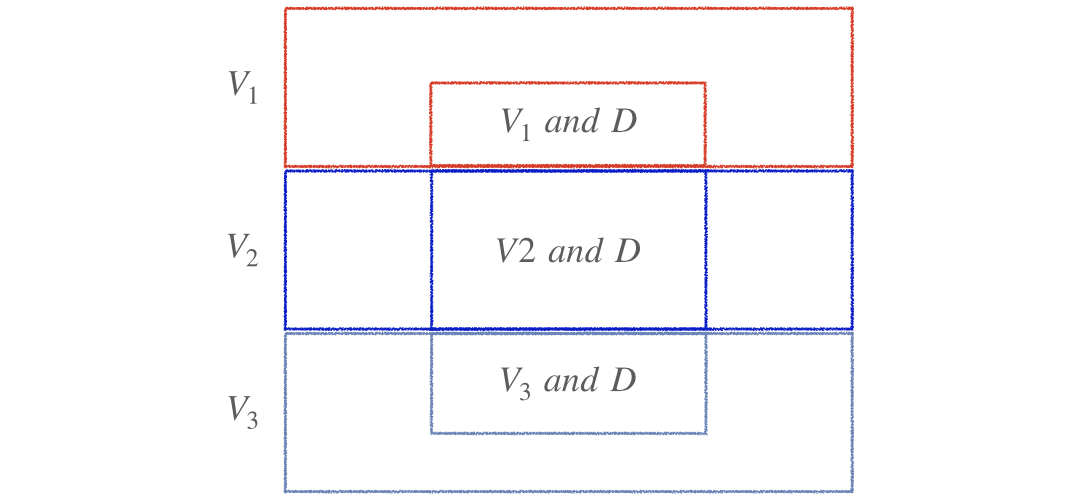
$$P(D) = P(V_1\ and\ D) + P(V_2\ and\ D) + P(V_3\ and\ D)$$
Total probability (Cont.)
$$ $$ $$P(D) = \color{red}{P(V_1\ and\ D)} + \color{blue}{P(V_2\ and\ D)} + \color{#9FAAC3}{P(V_3\ and\ D)}$$
$$\color{red}{P(V_1\ and\ D)} = \color{red}{P(V_1)P(D|V_1)}$$ $$\color{blue}{P(V_2\ and\ D)} = \color{blue}{P(V_2)P(D|V_2)}$$ $$\color{#9FAAC3}{P(V_3\ and\ D)} = \color{#9FAAC3}{P(V_3)P(D|V_3)}$$
$$P(D)=\color{red}{P(V_1)P(D|V_1)}+\color{blue}{P(V_2)P(D|V_2)}+\color{#9FAAC3}{P(V_3)P(D|V_3)}$$
Total probability (Cont.)

$$P(D)=\color{red}{P(V_1)P(D|V_1)}+\color{blue}{P(V_2)P(D|V_2)}+\color{#9FAAC3}{P(V_3)P(D|V_3)}$$
Bayes' formula
$$P(A|B) = \frac{P(A)P(B|A)}{P(B)}$$
Bayes' formula (Cont.)
- Bayes' formula:
$$P(A|B) = \frac{P(A)P(B|A)}{P(B)}$$
- The probability of a part being from vendor i, given that it is damaged:
$$P(V_i|D) = \frac{P(V_i)P(D|V_i)}{P(D)}$$
Bayes' formula (Cont.)
Bayes' formula: $$P(A|B) = \frac{P(A)P(B|A)}{P(B)}$$
The probability of a part being from vendor i, given that it is damaged:
$$P(V_i|D) = \frac{P(V_i)P(D|V_i)}{P(D)}$$ $$ $$ $$P(V_1|D) = \frac{P(V_1)P(D|V_1)}{P(V_1)P(D|V_1)+P(V_2)P(D|V_2)+P(V_3)P(D|V_3)}$$
Visual representation of Bayes' rule

$$P(V_1|D) = \frac{P(V_1)P(D|V_1)}{P(V_1)P(D|V_1)+P(V_2)P(D|V_2)+P(V_3)P(D|V_3)}$$
Visual representation of Bayes' rule (Cont.)
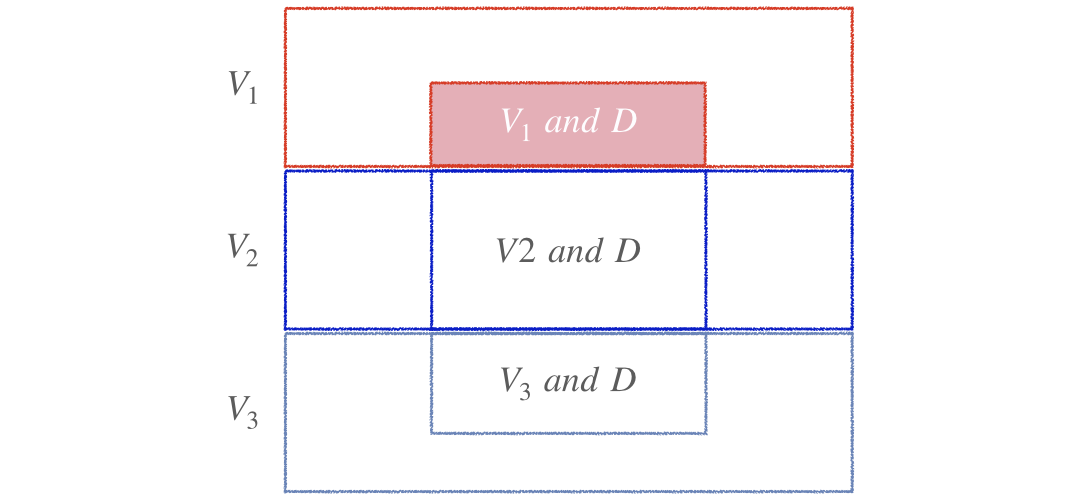
$$P(V_1|D) = \frac{\color{red}{P(V_1)P(D|V_1)}}{P(V_1)P(D|V_1)+P(V_2)P(D|V_2)+P(V_3)P(D|V_3)}$$
Visual representation of Bayes' rule (Cont.)
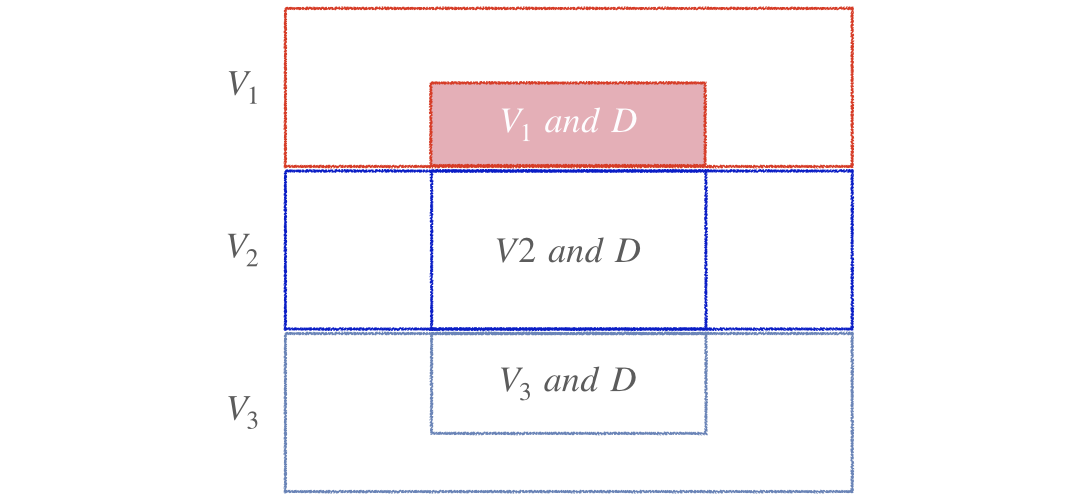
$$P(V_1|D) = \frac{P(V_1)P(D|V_1)}{\color{red}{P(V_1)P(D|V_1)}+P(V_2)P(D|V_2)+P(V_3)P(D|V_3)}$$
Visual representation of Bayes' rule (Cont.)
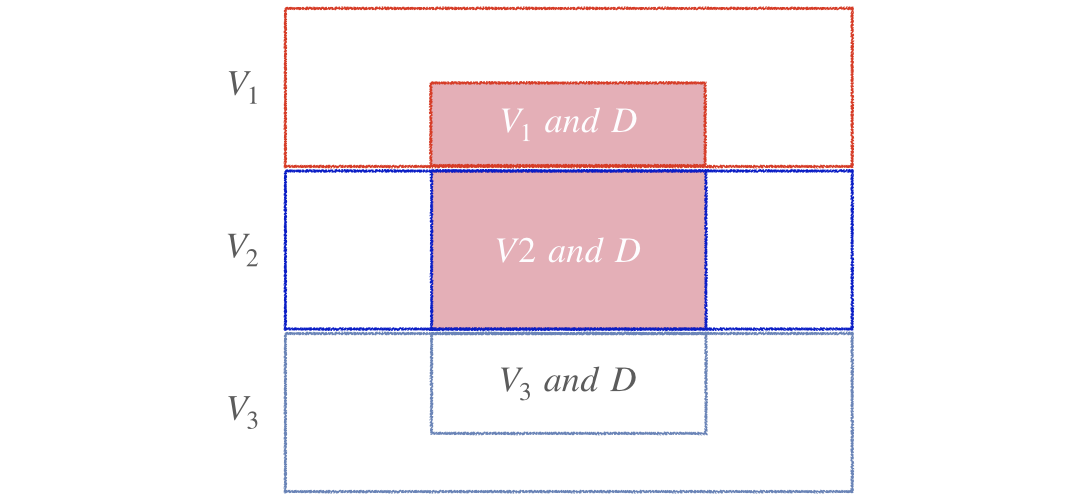
$$P(V_1|D) = \frac{P(V_1)P(D|V_1)}{P(V_1)P(D|V_1)+\color{red}{P(V_2)P(D|V_2)}+P(V_3)P(D|V_3)}$$
Visual representation of Bayes' rule (Cont.)
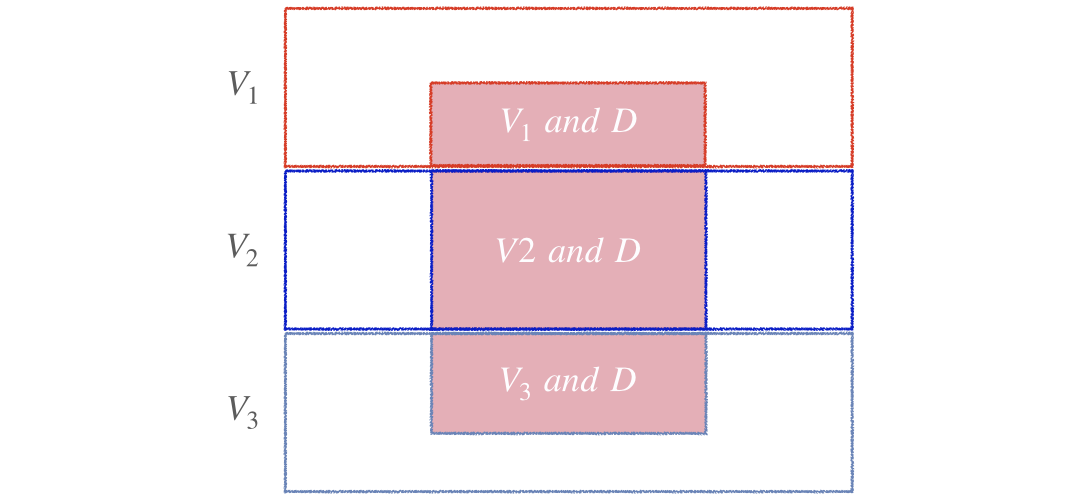
$$P(V_1|D) = \frac{P(V_1)P(D|V_1)}{P(V_1)P(D|V_1)+P(V_2)P(D|V_2)+\color{red}{P(V_3)P(D|V_3)}}$$
Visual representation of Bayes' rule (Cont.)
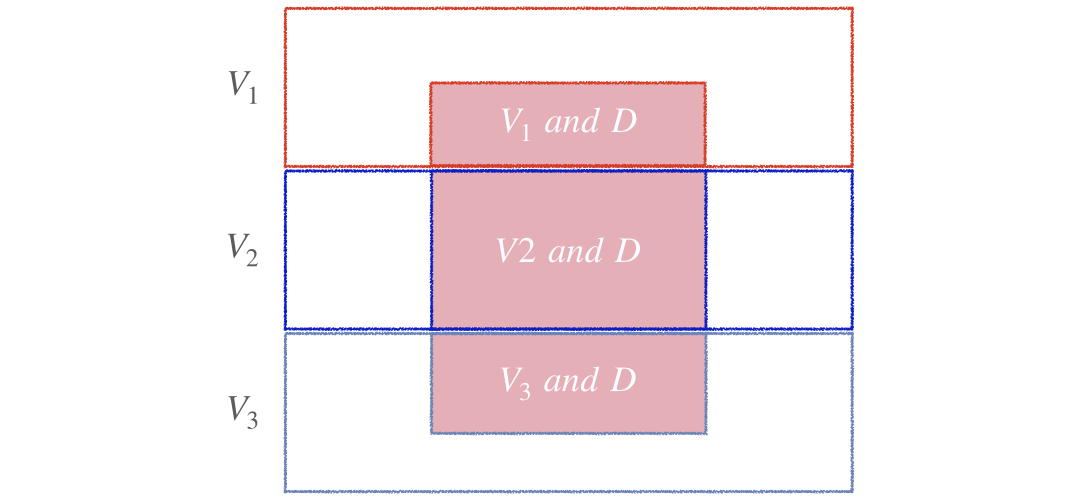
$$P(V_1|D) = \frac{P(V_1)P(D|V_1)}{P(V_1)P(D|V_1)+P(V_2)P(D|V_2)+P(V_3)P(D|V_3)}$$
Visual representation of Bayes' rule (Cont.)
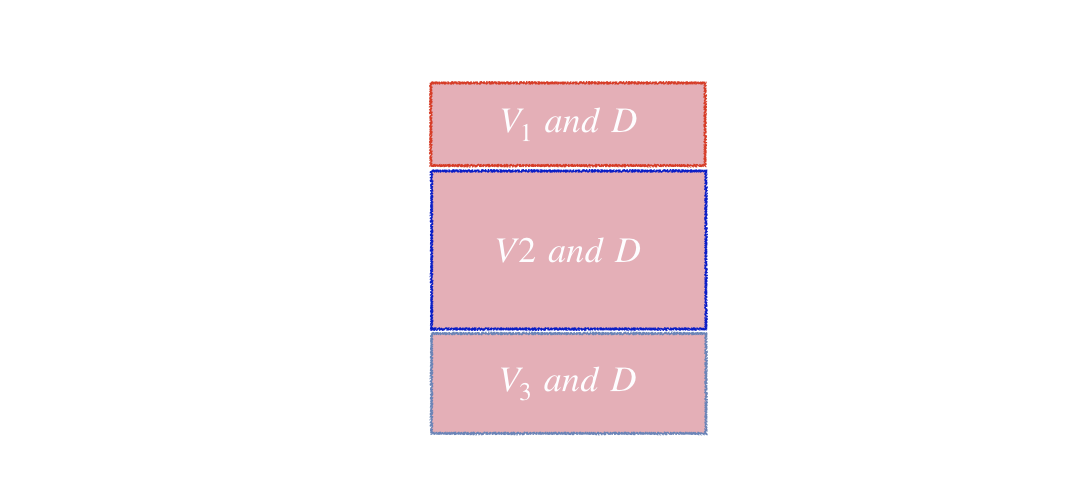
$$P(V_1|D) = \frac{P(V_1)P(D|V_1)}{P(V_1)P(D|V_1)+P(V_2)P(D|V_2)+P(V_3)P(D|V_3)}$$
Visual representation of Bayes' rule (Cont.)
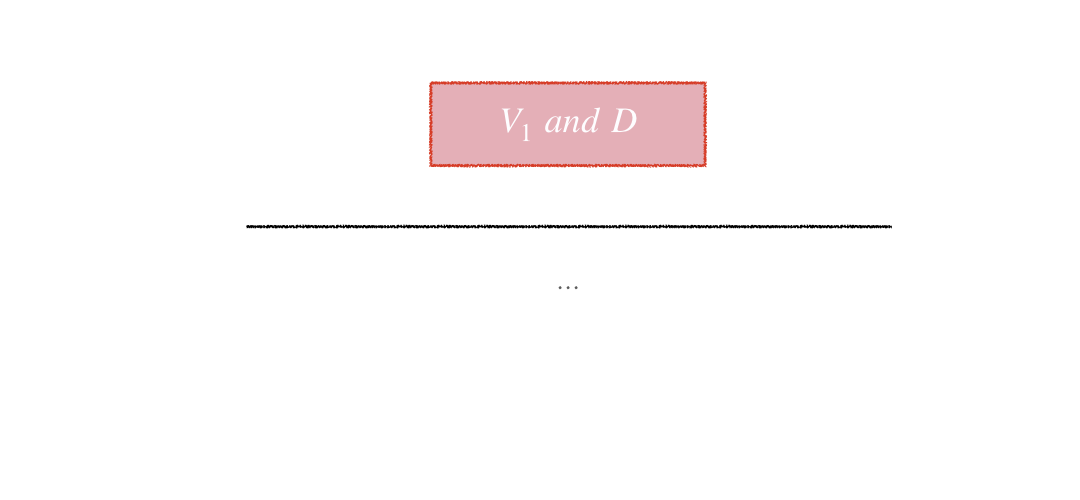
$$P(V_1|D) = \frac{\color{red}{P(V_1)P(D|V_1)}}{...}$$
Visual representation of Bayes' rule (Cont.)
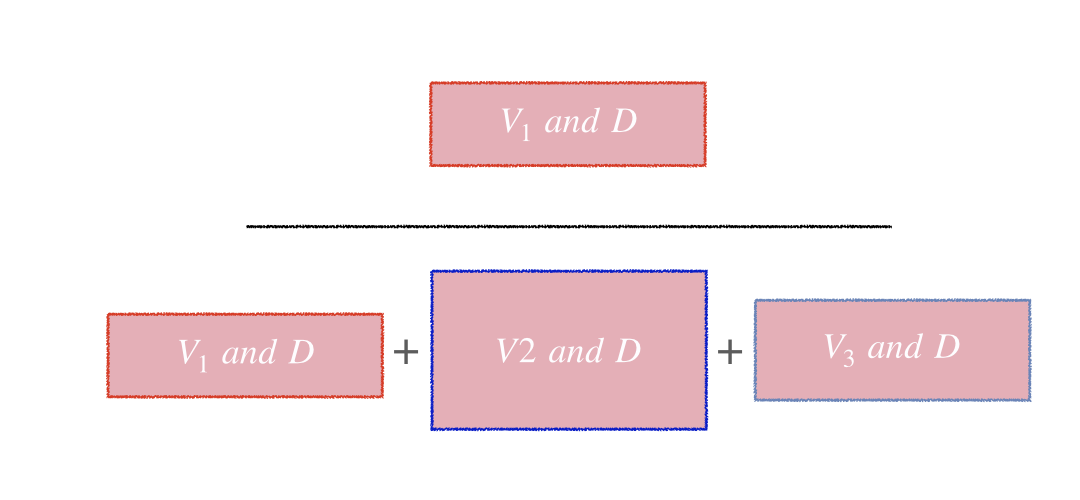
$$P(V_1|D) = \frac{\color{red}{P(V_1)P(D|V_1)}}{\color{red}{P(V_1)P(D|V_1)}+\color{blue}{P(V_2)P(D|V_2)}+\color{#9FAAC3}{P(V_3)P(D|V_3)}}$$
Factories and parts example in Python
A certain electronic part is manufactured by three different vendors, V1, V2, and V3.
Half of the parts are produced by V1, and V2 and V3 each produce 25%. The probability of a part being damaged given that it was produced by V1 is 1%, while it's 2% for V2 and 3% for V3.
- Given that the part is damaged, what is the probability that it was manufactured by V1?
Factories and parts example in Python (Cont.)
- Given that the part is damaged, get the probability that it was manufactured by V1.
P_V1 = 0.5
P_V2 = 0.25
P_V3 = 0.25
P_D_g_V1 = 0.01
P_D_g_V2 = 0.02
P_D_g_V3 = 0.03
P_Damaged = P_V1 * P_D_g_V1 + P_V2 * P_D_g_V2 + P_V3 * P_D_g_V3
Factories and parts example in Python (Cont.)
P_V1_g_D = (P_V1 * P_D_g_V1) / P_Damaged # P(V1|D) calculation
print(P_V1_g_D)
A randomly selected part which is damaged is manufactured by V1 with probability:
0.285714285714
Let's exercise with Bayes
Foundations of Probability in Python

